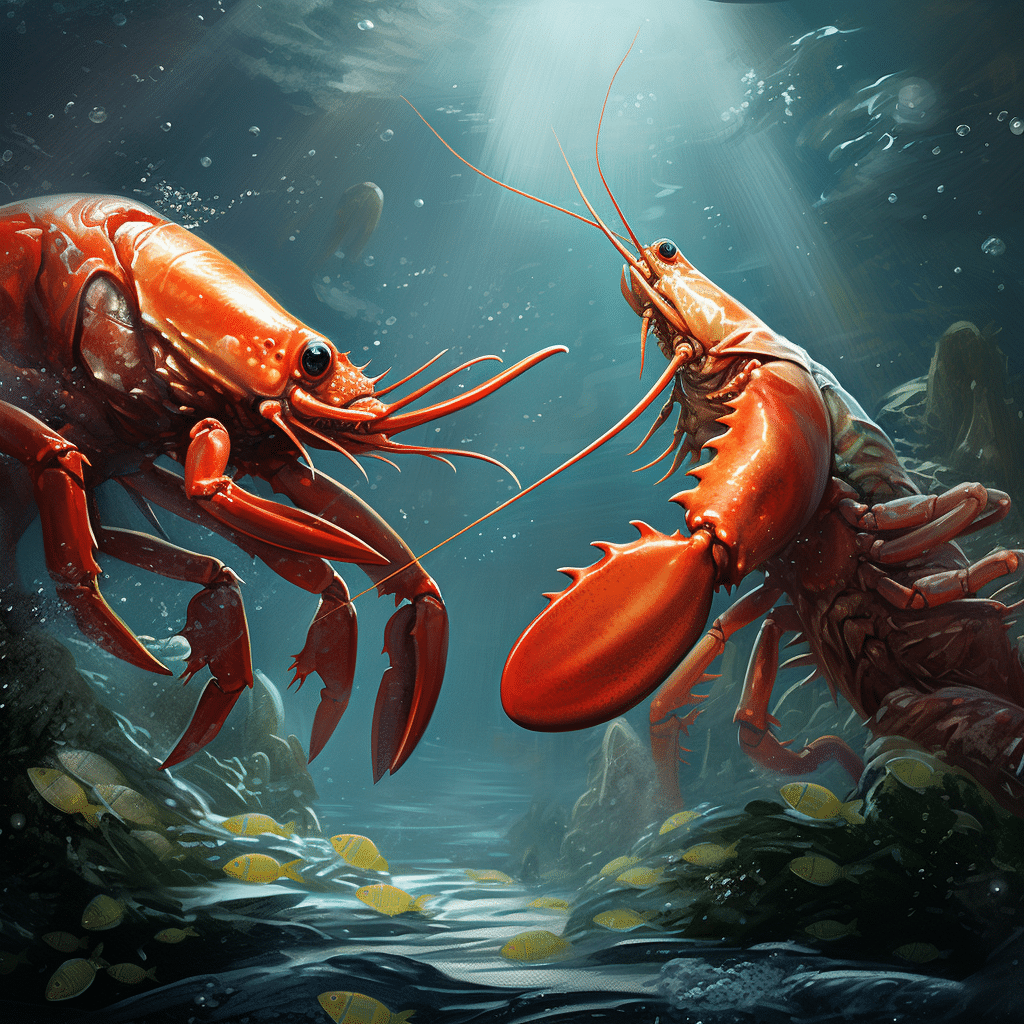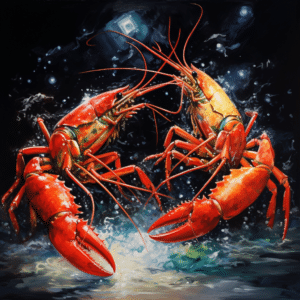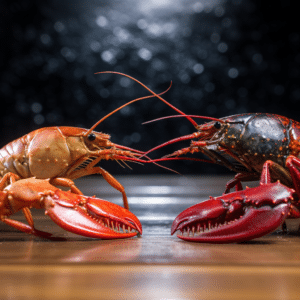
Langostino vs. Crawfish: Differences, Habits and Nutrition
Langostino vs. Crawfish and crawfish are crustaceans or shellfish. They consist of claws, a tail, and an exoskeleton. They can either be found in fresh or salt water bodies. Their claws and tails are the sources of meat, whereas the exoskeleton is used for soups.
Langostinos are found in saltwater bodies and crawfish in fresh waters. Langostino and crawfish are closely related to lobster but are not similar, with langostino being three times larger than crawfish. They are different in several areas including ;

Langostino Vs. Crawfish: Overview
Description
Langostinos are also known as squat lobster, Dublin bay prawns, and Norway lobsters. They come in various species, the most common being langostino Colorado found off the coasts of Chile, and tuna crab is mostly found in America.
Depending on the species, they are either vibrantly orange or yellow. They have a texture like shrimp, but look more like crabs. They grow to be 10-15 inches long and are three times as big as crawfish. Langostinos are transparent white when they are cooked, but they can turn red. They have ten legs, with the front ones turned in. This makes them look like they are sitting, which is how they got their name.
Crawfish are also known as crayfish, crawdad, or mudbugs, varying in locations. They could be blue, black, red, or brown. They look like tiny lobsters, averaging 3 inches. When cooked, they turn bright red.
Habitation
Langostinos are found in salty water bodies such as seas and oceans, common in the Mediterranean and Atlantic oceans. They live in large groups in crevices or under rocks in seabeds. They are scavengers and can eat anything from dead plants and tiny sea creatures to living creatures and algae. Langostinos are rare and mostly found in regions around their inhabitants.
Crawfish, on the other hand, are found in freshwater bodies such as lakes, swamps, rivers, and paddy fields. They are fo tucked under crevices or rocks, like their langostinos. Also be bred in fisheries and aquariums as pets. Common in most parts of the world.
Nutrition Facts
Langostino
Langostino has 16 grams of protein, 1 gram of fat, 51 calories, 115 mg of cholesterol, and 170 mg of sodium per dose. They are also a good source of salt, potassium, calcium, iron, the mineral phosphorus magnesium, and folate.
Crawfish
Crawfish has 77 calories, 15 grams of meat, 0.95 atoms of fat, 58 milligrams of salt, 302 atoms of sodium, twenty-seven milligrams of calcium, a mineral 22 milligrams of magnesium, 256 micrograms of phosphate, and 1.3 milligrams of zinc per serving. They also have folate, niacin, thiamin that thiamin and riboflavin.
Health Benefits
Langostino and crawfish have similar nutrients and thus the same health benefits ;
- They contain antioxidants that fight free radical cells and reduce the risks of diseases and infections.
- They may help in weight management due to the low calories and carbohydrates. However, they contain high levels of cholesterol which may be counterproductive when consumed in excess.
- They help in bone health. Langostino and crawfish contain high amounts of calcium, essential for bone mass and strength.
- They help reduce pain and discomfort caused by inflammation because they have qualities that stop inflammation from happening. They also help ease joint pain, swelling, and pressure.
- Langostino and crawfish are high in cholesterol which might aid in improving fertility in men and women.
- They contain fatty acids that are good for brain function. The fatty acids also help boost mood and may help reduce symptoms of depression including; anxiety, feeling of worthlessness, weight gain or loss, and suicidal thoughts. They also assist in the production of endorphins, the feel-good hormone that helps boost self-esteem and worth.
- The phytochemicals found in these two selfish foods may help reduce fatigue by boosting your energy levels.
- They contain iron and folate that helps prevent anemia.
- Langstonino and crawfish both have fats that help a developing child’s brain grow. It also helps the mom’s bones get stronger so she can carry the baby’s weight and keep from losing bone mass while nursing. During breastfeeding, a woman loses important nutrients, like calcium, which is important for strong bones.
- They contain high amounts of protein essential for muscle and bodybuilding.
- Antioxidants and fatty acids in langostino and crawfish may help improve skin health.
- Sodium and potassium in the two may help replenish healthy body cells.
Side Effects
Though langostino and crawfish have many health benefits, they could cause several side effects.
- They contain high levels of sodium and are contra-indicated in persons on sodium-free diets. Avoid adding much salt when serving them.
- High sodium might raise blood pressure in hypertensive persons.
- They contain high amounts of cholesterol which is not good for heart health. It could raise bad cholesterol leading to increased risks of conditions like heart failure and stroke.
- They could make you sick because of what you eat. Langostino and crawfish, like other seafood, could make you sick if you don’t treat them right, don’t cook them enough, or if they are contaminated. Make sure you wash your hands, make them well, and keep them correctly to avoid getting sick.
- Shellfish can cause an allergic reaction in people who are allergic to them. Some signs of allergies include swollen lips and mouth, red, itchy skin, diarrhea, discomfort in the stomach, and vomiting.
Storing Shellfish
Fish is easily contaminated. Avoid storing them at room temperature. They are sensitive, such that they are immediately frozen or refrigerated on the shores. Consume them in 2 to 3 days if refrigerated and within one month when frozen.

Preparation And Serving
Langostino vs. Crawfish Langostino and crawfish can be used in salads, soups, sauces, pizzas, or even as stuffings in burgers. You could bake, grill, sautee, or boil. The cooking time will vary depending on size and method of cooking, but they often take a few minutes.